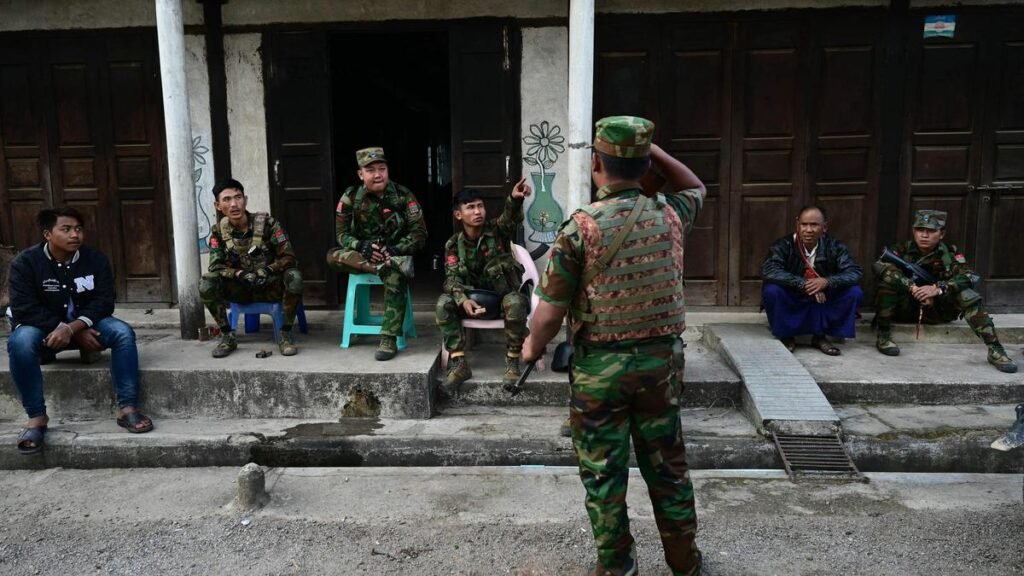Recently, pickup trucks carrying ethnic minority fighters entered a town in Myanmar’s northeastern Shan State that had been cleared of junta troops—a notable victory that shifted the dynamics of the country’s ongoing civil war.
As the convoy passed the golden spire of a Buddhist pagoda in Namhsan, attention was divided between the surroundings and the skies, where people were on the lookout for junta attack jets supporting their ground troops. Upon reaching the town, the fighters disembarked from the vehicles and spread out on foot through silent, deserted streets, flanked by locked wooden houses—a stark contrast to the days of recent fighting.
A sudden burst of gunfire exposed a pocket of junta troops on the town’s edge, prompting the fighters to quickly seek cover behind walls. Nestled in the hills of northern Shan State, Namhsan became the latest conquest for the Ta’ang National Liberation Army (TNLA) since launching a surprise offensive against Myanmar’s junta in October.
The TNLA officially announced the capture of Namhsan, showcasing footage of the fighters in the concluding stages of their operation to secure the town. Prior to the TNLA’s takeover, the group’s spokesman, Tar Aik Kyaw, stated that their fighters were “walking the revolutionary path” while emphasizing the primary goal of dismantling the military dictatorship—a sentiment he claimed resonates with the aspirations of the Myanmar people.
On the road to Namhsan, hours before the TNLA’s arrival, a squad of fighters in camouflage fatigues and peaked caps, adorned with badges featuring the TNLA emblem against a blue sky, unloaded crates of mortars. They conducted a final check before heading into battle, illustrating the intense and strategic nature of their operations.
The stiffest challenge
For close to three years, the civilian “People’s Defence Forces” have been engaged in a nationwide struggle to remove the junta that seized power in a coup in 2021. However, the offensive initiated by the Ta’ang National Liberation Army (TNLA) and its allies—the Arakan Army and Myanmar National Democratic Alliance Army—in October has energized the anti-junta movement, posing the most formidable military challenge to the generals in decades. These groups are launching attacks on multiple fronts, evident in the intense fighting witnessed in Namhsan.
Namhsan bears the scars of the conflict, with one of the pagoda’s spires knocked down, an unexploded rocket on the ground, and a building riddled with bullet holes. The aftermath inside reveals a grim reality, with dark pools of blood staining the floor next to blankets and food wrappers. In another room, blood is smeared on the walls, underscoring the brutality of the recent clashes.
Residents who have not yet fled live in constant fear, grappling with the harsh reality of their disrupted lives. One resident, Ohmar (using a pseudonym for security reasons), expressed the challenges faced by those seeking refuge: “We don’t have anywhere to go. There are caves to hide in, but they are a long way from our house.”
The toll of this offensive is significant, with over 600,000 people estimated to have been displaced and 378 civilians reported killed since the alliance launched its offensive on October 27, according to the United Nations. The impact on communities and individuals highlights the urgent need for a resolution to the conflict and the restoration of stability in the region.
